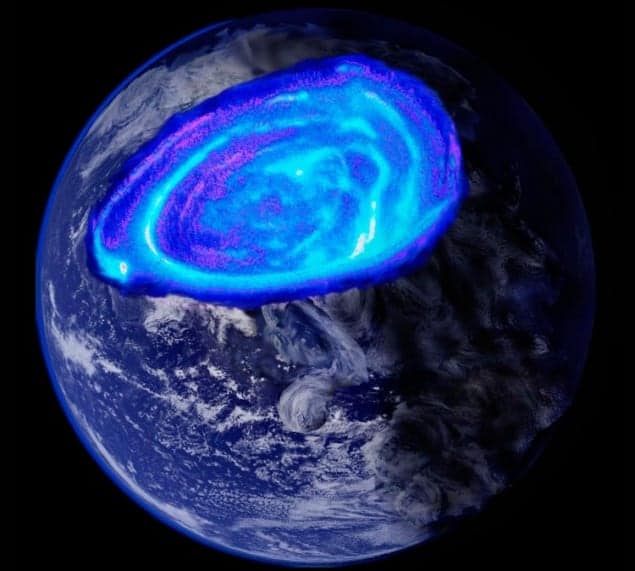
Earth’s magnetic field, which shields us from the Sun’s deadly rays, emerged from the planet’s core even earlier in Earth’s history than we previously thought. While this field, 3.45 billion years ago, was not yet strong enough to shelter life on Earth, new findings also suggest that the young planet was significantly wetter than it is today. That is according to a group of researchers who have discovered an ancient magnetic field frozen into rocks in South Africa.
John Tarduno at the University of Rochester in the US, and his team, detected the field in a sample of volcanic rocks collected in the Barberton Greenstone Belt. When these rocks solidified, a number of tiny magnetic inclusions – trapped inside the molten rock – aligned themselves with Earth’s magnetic field. In this way, the volcanic rocks acted like recording devices, capturing the strength and configuration of the ancient field.
Super SQUID
First, the team needed to create a device capable of measuring the faint magnetic field inside the rocks, and for this the researchers opted for a superconducting quantum interface device or SQUID magnetometer. Standard SQUIDs lack the required sensitivity so Tarduno and his team customized their device by reducing the diameter of the sensing zone to just 6 mm.
Using their new SQUID, the researchers were able to confirm that the 3.5 billion year old silicate crystals had recorded a magnetic field originating from Earth’s core. The oldest record of Earth’s magnetic field prior to this research is 3.2 billion years detected in a separate outcrop of volcanic rocks in South Africa.
Another challenge the researchers faced was to locate rock samples that had not suffered too much alteration over the past three and a half billion years. The magnetic inclusions, contained within single silicate crystals, are prone to structural and chemical changes as a result of mountain building in this region. “It is a bit of a Goldilocks scenario, where we needed enough magnetic particles to make a recording but not too much as to distort results,” says Tarduno.
Life protector
Earth’s magnetic field is generated by the swishing of molten iron deep in the planet’s outer core – the coriolis force helps to create a convection pattern in this zone, leading to a geodynamo. Today the field extends out into the magnetosphere, which stretches to 60,000 km, or 10.7 Earth radii, on the sunward side of Earth and much further on the other side. The magnetosphere terminates at the magnetopause, which represents a “stand-off” between Earth’s magnetic field and high-energy winds from the Sun – life on Earth depends on this.
The researchers found that Earth’s field was significantly weaker 3.5 billion years ago than it is today. What is more, they employ an established solar model to infer that, at the same time, the Sun was shedding material at a rate of about 100 times the average observed today. Combined, these two factors mean that the magnetopause was half as close to Earth as it is today.
Tarduno says that these conditions would have stripped away vast quantities of water vapour before the water cycle became stabilized. For this reason, he concludes that the very young planet, prior to the onset of a magnetic field, would have contained more water than previously thought, and significantly more than it does today.
This research appears in Science.



